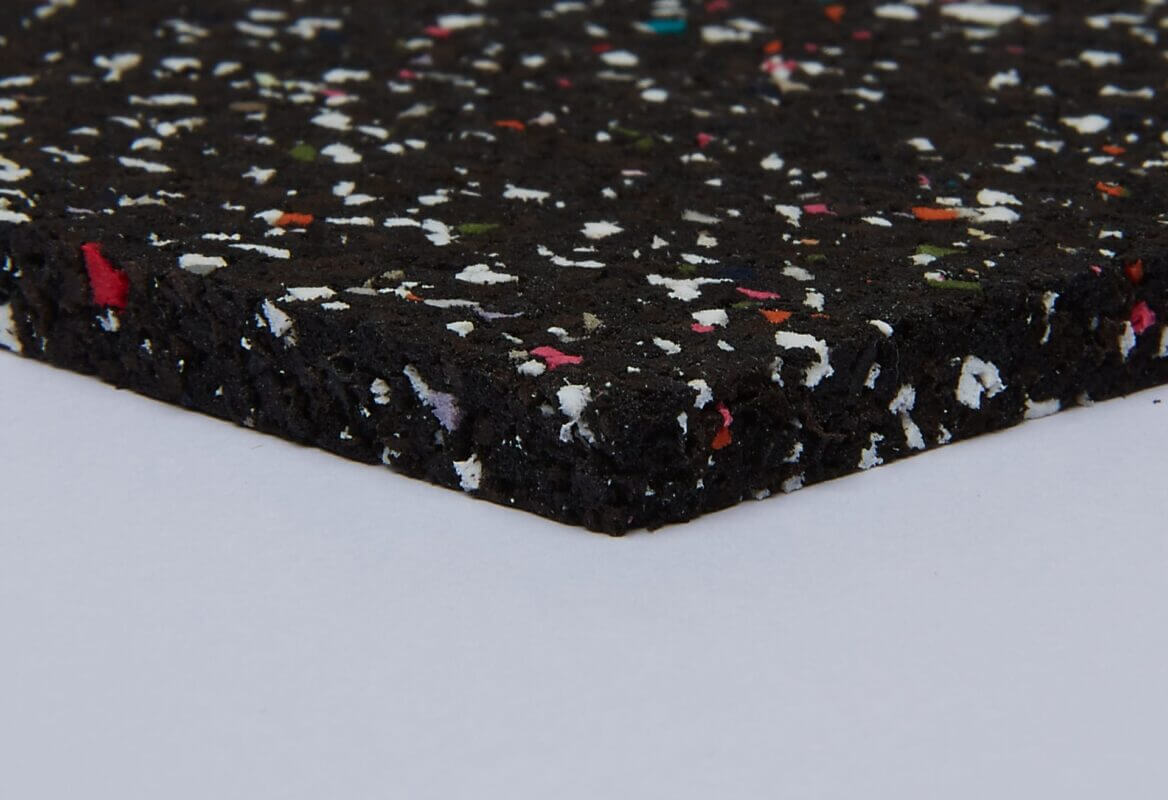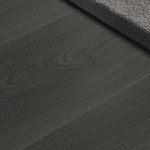Blog
Best Acoustic Underlay

Acoustic underlays are fantastic if you have concerns about the noise of your flooring, whether that flooring is already installed or simply planned for the future. That being said, there’s a range of acoustic underlays. Picking the right one for you will be due to the factors involved that are highly dependent on your particular situation.
As such, we here at QA Flooring have put together this guide to ensure that you can make an informed decision.
What is an Acoustic Underlay?
An Acoustic Underlay is a type of material that is placed beneath the flooring, designed mainly, but not exclusively, to reduce the amount of noise made when walking over the floor. It also lowers the distance airborne noise travels, meaning you will hear less of what happens within a room with an acoustic underlay than without it. This is highly useful in homes with several occupants, and even more so in a room with multiple stories.
Acoustic underlays have risen in popularity since their inception when it was considered not much more than a luxury. With the increase in population, especially inside flat complexes, the demand for cheaper and more effective underlays increased. Many companies began to manufacture underlays to serve several purposes to increase their buying value.
Benefits of Acoustic Underlays
No one underlay has all of the following benefits, as some are mutually exclusive to each other, but here are some of the pros you can get from them.
-
- Soundproofing – The primary function that will be present in all acoustic underlays. As stated before, a quality acoustic underlay will reduce how far the sound within a room travels, as well as the sound of impact against the floor.
-
- Enhanced Comfort – Underlays can provide a cushioning effect underfoot – making even hardwood flooring a lot more softer and comfortable to walk on.
-
- Thermal Insulation – Underlays can also provide insulation, meaning it is good at blocking heat from transferring through the ground. This not only makes your room warmer and more comfortable to be in – but it also reduces energy bills, as you won’t be replacing the heat you lost. In a way, thermal insulation flooring more or less pays for itself over time.
-
- Protection for Primary Flooring – Underlays always, no matter the type, increase the longevity of your floor. Impacts against the floor will be spread across it more evenly.
-
- Moisture Barrier – Some underlays offer a moisture barrier – which is very useful for rooms that have a high amount of moisture. This will stop moisture from reaching the subfloor and cause issues such as fungi and mould. This, in turn, will also improve the air quality of the room.
What should I consider when buying an underlay?
There are several factors to understand before we get into what the best Underlay is.
-
- Density – The denser the underlay, the stronger it is. Higher-density underlays not only last much longer against wear and tear, but they typically have better sound absorption qualities. This doesn’t mean the denser the better, however. Denser materials tend to cost more than thinner materials, not to mention reduce the comfort factor by a large amount. On top of that, they are rarely compatible with underfloor heating systems.
-
- Thermal Insulation – Thermal insulation and sound absorption are both possible in the same underlay. However, they are two sides of the same coin. Typically, you have to choose between excellent insulation, excellent sound absorption, or a balance of both.
-
- Environmental – Some homeowners are environmentally conscious, and a lot of underlays do not take this into account. That being said, some have been made from recycled or renewable resources, meaning that when it is done, it can be further recycled.
-
- Flooring Types – This is perhaps one of the foundational concerns to have when installing an underlay – the flooring type. Underlays are not universal, meaning they are not compatible with every flooring type. Some are made specifically for LVT, Wood, Carpet etc.
That should do it for the information you need. Up next is what you came here for – the best acoustic underlay for you.
Best Acoustic Underlay for LVT
LVT is a flooring type that is characterised by its endless design possibilities, comfort and overall water resistance. It has risen in popularity by a large amount since it hit the market. The best acoustic underlay for LVT is simple.
SoundBarrier Underlay
QA flooring’s sound barrier underlay is made from high-density polypropylene foam, a material so strong that it will match the lifetime of any LVT floor. Along with the density is a thickness, and this thickness contributes heavily to the overall insulation that the flooring provides. On top of this, this underlay has a moisture barrier, meaning that it will protect both your floor and subfloor from moisture damage by soaking it up, which also makes the air quality great. Finally, the sound reduction quality is 24dB, which calculates to about a 31% reduction in noise.
In a residential area, these underlays would be best used within living rooms, bedrooms and hallways. In these areas, noise reduction should be considered a priority, as not only is noise made here, but it’s most likely to be transmitted to other areas of the house. In commercial settings, high-traffic areas like offices and stores would benefit greatly from the high density, and areas that are more prone to moisture (such as work in the marine sector) can also benefit from the moisture barrier.
Best Acoustic Underlay for Wood
Wood flooring is one of the most popular flooring types in the world. That being said, there has been a wide range of issues with wood, ranging from the level of comfort to its lack of moisture protection. Nonetheless, here are the best acoustic underlays available for your wooden floor.
Quiet Cork Underlay
Cork is a recyclable material and as an underlay, it stands out as a top-tier choice in the realm of sound reduction.
-
- Lightweight Performance – Cork is made up of gas and bark in a ratio of 60:40, making it a very lightweight underlay. This ensures that it is both easy to move, whilst generally being very effective.
-
- Environmental Boon – Quiet Cork is made up of recycled materials, and as such, is a very environmentally friendly option – doubly so when it comes to the end of its lifespan and can be recycled again.
-
- Antimicrobial and Bug Resistant – Within natural cork is a substance called Suberin. Suberin is a natural insect repellent, meaning it will keep your floor safe from insect infection.
-
- Thermal Insulation – Cork has natural thermal insulation, meaning it will keep heat inside the home rather than letting it escape through the floor, saving you bills and paying for itself in the long run.
-
- Comfort – It’s not often that an underlayment as dense as this is very comfortable, further making our Quiet Cork that much more impressive and premium.
E-Board
There are three different types of E-board on the market.
-
- E-Board Timber – E-board Timber is designed with multiple layers, integrating a mix of synthetic and natural materials. We have a range of thickness levels to suit your floor and have a very high dB rating, ensuring there’s a significant reduction in both impact and airborne noise. On top of that, this underlay provides both a moisture barrier and a thermal barrier.
-
- E-Board Concrete – This underlayment is made from heavy-duty composites and moisture-resistant layers, ensuring suitability for concrete floors. It’s thicker than its timber counterpart, and it has to withstand the rigidity of concrete substrates. Of course, it also has exceptional sound insulation abilities. On top of that, just like the last addition, it has fantastic moisture protection.
-
- E-Board Pro – The pro edition is a premium blend of materials, ensuring that it’s able to be put under a large number of flooring types. It also has a much higher sound absorption rate than the other two, as well as having both moisture and thermal properties.
Best Acoustic Underlay for Carpets
Carpets are not the noisiest of flooring options, but acoustic underlays are still useful for limiting how far sound travels in and outside of the room.
PowerWalk Silver
PowerWalk Silver is a PU foam underlayment, making it a highly comfortable option that seeks to balance both comfort and functional support. Impact noise impact is reduced by 38dB, making it great for multi-story residences, as well as having a protective barrier that prevents moisture ingress. This is a well-balanced option, but not as good as the next.
PowerWalk Gold
PowerWalk Gold is an upgraded version of PowerWalk Silver, boasting a high density that will see it through even the harshest cases of wear and tear – perfect for high-traffic areas. On top of that, you can expect fantastic impact sound insulation of 44dB, and a thick level of thermal insulation that will keep heat indoors and lower your energy bills. The moisture barrier provides a layer of protection against moisture, which heavily extends the life of both the carpet and the subfloor.
ExtraStep Underlay
Extrastep is a high-performing acoustic underlay option, with 33dB impact sound reduction. This allows it to minimise a lot of the noise made within a room.
On top of that, it has a high density of 180 kg, meaning this 6mm PU underlay promises hard-to-match durability and longevity. Despite this, though, it’s able to be compatible with underfloor heating systems.
If you’re looking for a carpet underlay to help you comply with Part E of Building Regulations and also provide outstanding sound reduction qualities, we also have Regupol Sonus Multi & Eco.
Conclusion
We hope the information provided has given you enough confidence to make an informed decision on the precise type of underlayment that you need. QA Flooring thank you for reading the article.

